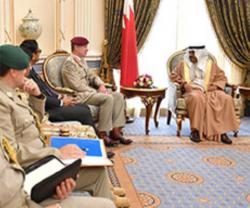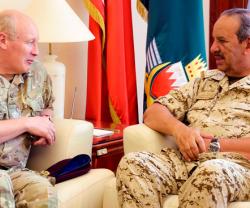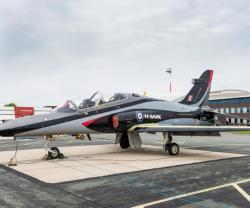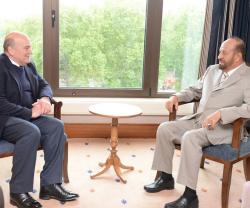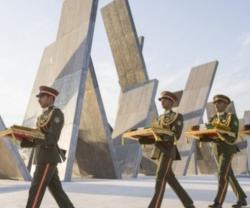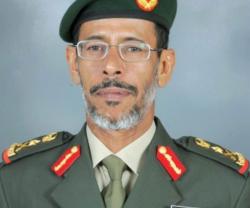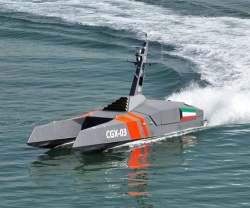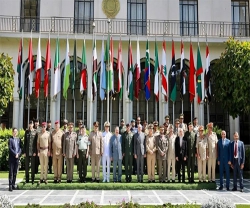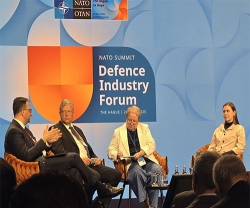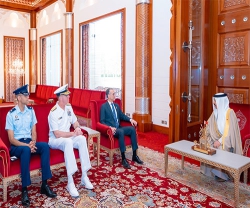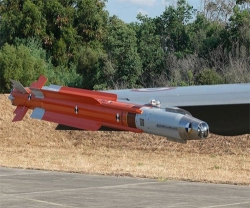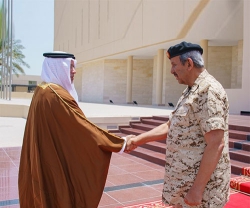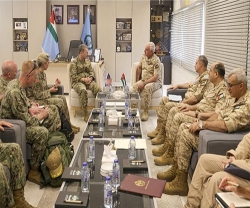The 2015 Strategic Security and Defence Review incorporated two new strike brigades into the UK Armed Forces, and DSEI will showcase how the Strike concept is manifesting itself in the modern day military. With one year to go until DSEI 2017 (Defence and Security Equipment International), the organisers are creating an exciting focus on rapid reaction or 'STRIKE' forces in the Land component of the event.
Against a complex background of threats and instability, demands on the British Army are increasingly focused on its agility and the inherent mobility of its forces. The UK government, its Allies and partners are already directing funds toward land capabilities such as armoured vehicles, Humanitarian Assistance and Disaster Relief (HADR), future dismounted soldier systems, and deployable infrastructure.
DSEI 2017 will showcase relevant exhibitor produced equipment which is set to be used by the British Army and other NATO militaries. There will also be three displays: A Dismounted Soldier feature; Mounted Close Combat vehicle park; and a Command HQ - featuring advanced command and control (C2) and information, surveillance, target acquisition, and reconnaissance (ISTAR) - together with associated Force Protection elements.
In Britain alone, around £178 billion will be spent on military equipment over the next decade including the arrival of the new Strike Brigades each composed of 5,000 personnel. These are to be equipped with a mix of the new Ajax reconnaissance vehicles and a new mechanised infantry vehicle (MIV), expected to be an 8x8. The British Army is planning a prominent presence at DSEI 2017.
General Sir Nicholas Carter KCB CBE DSO ADC Gen Chief of the General Staff British Army said: “I much look forward to DSEI 2017. We intend to build on the very positive experience of DSEI 2015 as we construct the partnerships we need to deal with the complexity of the future operating environment”.
Acquisitions elsewhere also reflect the growing requirement for mobility. The Czech Republic is looking for a supplier of open combat vehicles with a 4x4 configuration, whilst Slovenia is procuring special armoured off-road vehicles. Lithuania is acquiring 88 Boxer infantry fighting vehicles (IFVs) and Australia is looking to acquire 222 combat reconnaissance vehicles. For dismounted soldier systems, Norway is upgrading its equipment and acquiring new footwear and all-weather clothing for the army, navy and air-force. Reflecting evolving tactical requirements, New Zealand is also looking to replace its current Body Armour System.
DSEI attracts an unrivalled number of international land force delegations, government officials, OEMs, system integrators and SMEs. In 2015, the event drew 34,038 visitors, 1,683 exhibiting companies representing 108 countries and 42 international pavilions. There were 2,874 VIP attendees resenting 84 countries and 255 programmed delegations.
DSEI 2017 will enable visitors to access the entire land systems supply chain. Land domain exhibitors include such leading players as BAE Systems, Babcock, FN Herstal, General Dynamics, Kongsberg, L3, Leonardo, Lockheed Martin, Nammo, Patria, Qinetiq, Qioptiq, Rheinmetall, RUAG, Saab and Thales.
Reflecting the unrivalled opportunities DSEI presents to exhibitors, Balz Villiger, Senior Manager Marketing & Communication, RUAG Defence, said: “DSEI 2015 was an outstanding opportunity for RUAG to showcase its extensive expertise in the areas of tactical communications and artillery solutions to an extensive and expert audience. Furthermore, the event is an excellent platform to maintain existing contacts and make new ones. RUAG will therefore be exhibiting once again in London in 2017”.
Furthermore, reflecting DSEI’s status as a premier forum for international co-operation and thought leadership, senior military commanders will be sharing their views on how doctrine and capabilities must be shaped to meet the demands of an uncertain future across a series of seminars, key speeches and presentations.


